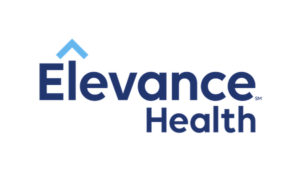ensure your content is widely accessible with identical end-user experiences in any language, in any format
16% of the world’s population
an estimated of 1.3 billion people experience significant disability. Improved digital accessibility is key in enabling these groups and preventing isolation.
27% of adults in the United States
have some type of disability. Improving accessibility is key to driving a more inclusive workforce or patient/customer base.
97% of the internet
is inaccessible for those with disabilities.
64% rise in lawsuits
The number of U.S. lawsuits alleging that websites, apps, and digital videos were inaccessible to people with disabilities rose in the first half of 2021 by 64% from the previous year.

CQ fluency collaborates with top global organizations to make content accessible to all, regardless of impairments
Our commitment to improving lives goes beyond legal obligations, aiming to break communication barriers and empower everyone for full societal participation.
key solutions
Our accessibility specialists can help audit, develop, and maintain an equivalent user experience for people with disabilities. Our teams are passionate about providing accessible and inclusive communication and strive to meet the recommendations set forth by varying governing bodies including, but not limited to the U.N. Convention on the Rights of Persons with Disabilities, Web Content Accessibility Guidelines (WCAG 2.0), Section 508, Directive (EU) 2016/2102 of the European Parliament and Americans with Disabilities Act (ADA).
website accessibility
We ensure WCAG compliance, making your content accessible to all users and meeting ADA, Section 508, and other accessibility laws. Our accessibility specialists conduct usability testing and provide a compliance report. Once issues are resolved, we reevaluate and issue a VPAT certification.
document accessibility
We ensure compliance with Section 508 guidelines by using custom technology and monitoring for evolving standards. We provide document accessibility services for various devices and formats, ensuring equal access to content in any language.
braille and tactile formats
Our teams leverage the latest technology and equipment for braille services available in most languages. Our professional transcriptionists and QA process include oversight of quality embossing and shipping.
captioning and subtitling
Our captioning and subtitling services ensure accurate text representation, ideal length, and alignment with speaker speed, while maintaining accessibility compliance to broaden your content’s reach.
multilingual transcription
Our multilingual transcription services break down language barriers by transcribing audio and video content into text, offering multilingual voiceovers, summarizing meetings, and enabling real-time communication with speech-to-text software.
interpretation services
Our Interpretation Services provide real-time language solutions, including on-site interpretation, webcast interpretation, video remote interpretation (VRI), over-the-phone (OTP) services, and language access for seamless communication.
other accessibility solutions
Enhance inclusivity and accessibility across various domains.
Explore additional services including:
-accessibility consulting
-closed captioning for streaming
-voice and speech recognition
-cultural sensitivity training
accessibility laws & compliance
Section 508 compliance
Section 508 has been in effect for over a decade & ensures accessibility of all federally funded software and web-based content. This includes more than just websites, it includes all office documents (Word, PowerPoint, Excel, and PDF) as well as applications and multimedia. CQ fluency delivers industry-leading expertise for 508 compliance. We leverage a team of experts who are well versed in Section 508 guidelines, alongside custom technology to seamlessly take your content from non-compliant, to fully compliant.
There are six product categories in the law that have set specific technical standards:
– Software applications and operating systems
– Telecommunications products
– Web-based information and applications
– Video and multimedia products
– Self-contained, closed products
– Desktop and portable computers
Web Content Accessibility Guidelines 2.0 (WCAG 2.0)
Every organization can have a great impact on the daily lives of people with disabilities by designing a website that is accessible for those with fine motor disabilities, epilepsy, cognitive disabilities, visual impairment and deaf / hard-of-hearing.
The Barrier-Free Health Care Initiative is a partnership between U.S. Attorneys’ offices across the nation and the Department’s Civil Rights Division to verify that healthcare institutions provide equal access to people with disabilities. This includes access to effective communication. The law prevents healthcare websites from discriminating against people with disabilities and requires compliance with accessibility standards such as the Web Content Accessibility Guidelines (WCAG) 2.0.
WCAG is the technical standard set by the World Wide Web Consortium for website accessibility, outlining a common definition for what is deemed accessible. This operates under guidelines governed by 4 core principles of accessibility: perceivable, operable, understandable, and robust.
– WCAG 2.0 was published on 11 December 2008.
– WCAG 2.1 was published on 5 June 2018.
– WCAG 2.2 is the most recent publication in 2021.
CQ fluency is continually monitoring WCAG guidelines, and leverages custom technology to enhance accessibility for your web-based content in conformance with these principles. If you are a federal agency or one of their contractors (such as a Medicare Advantage/Part D Contractor), you are required to conform with WCAG 2.0.

we’re passionate about helping our clients develop safe and accessible communication for everyone
Let our expert transcriptionists, linguists and QA specialists ensure your alternate formats are compliant and help you expand the reach of your communication. We can help you build your compliance plan with customized technologies and processes that are right for your organization.

